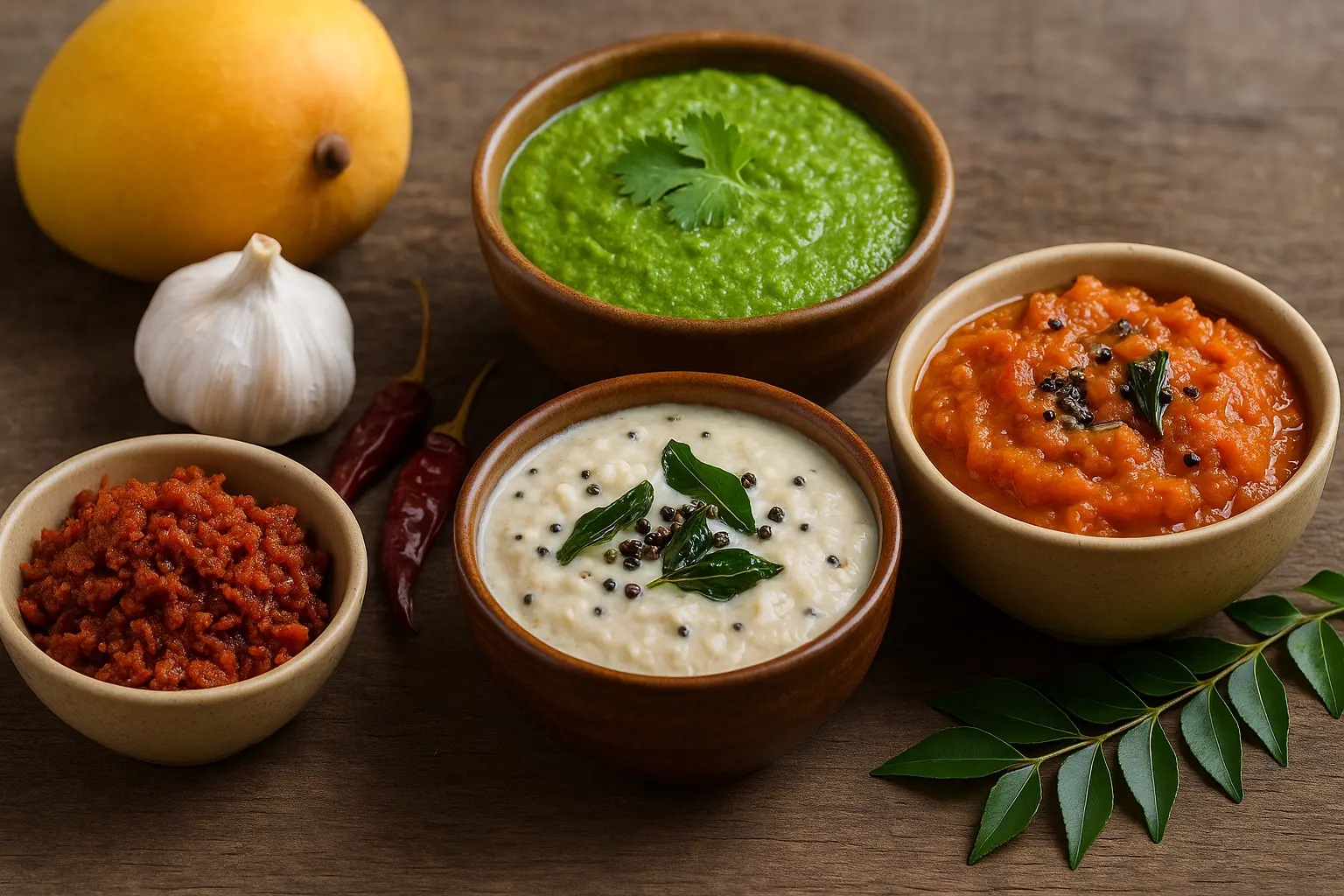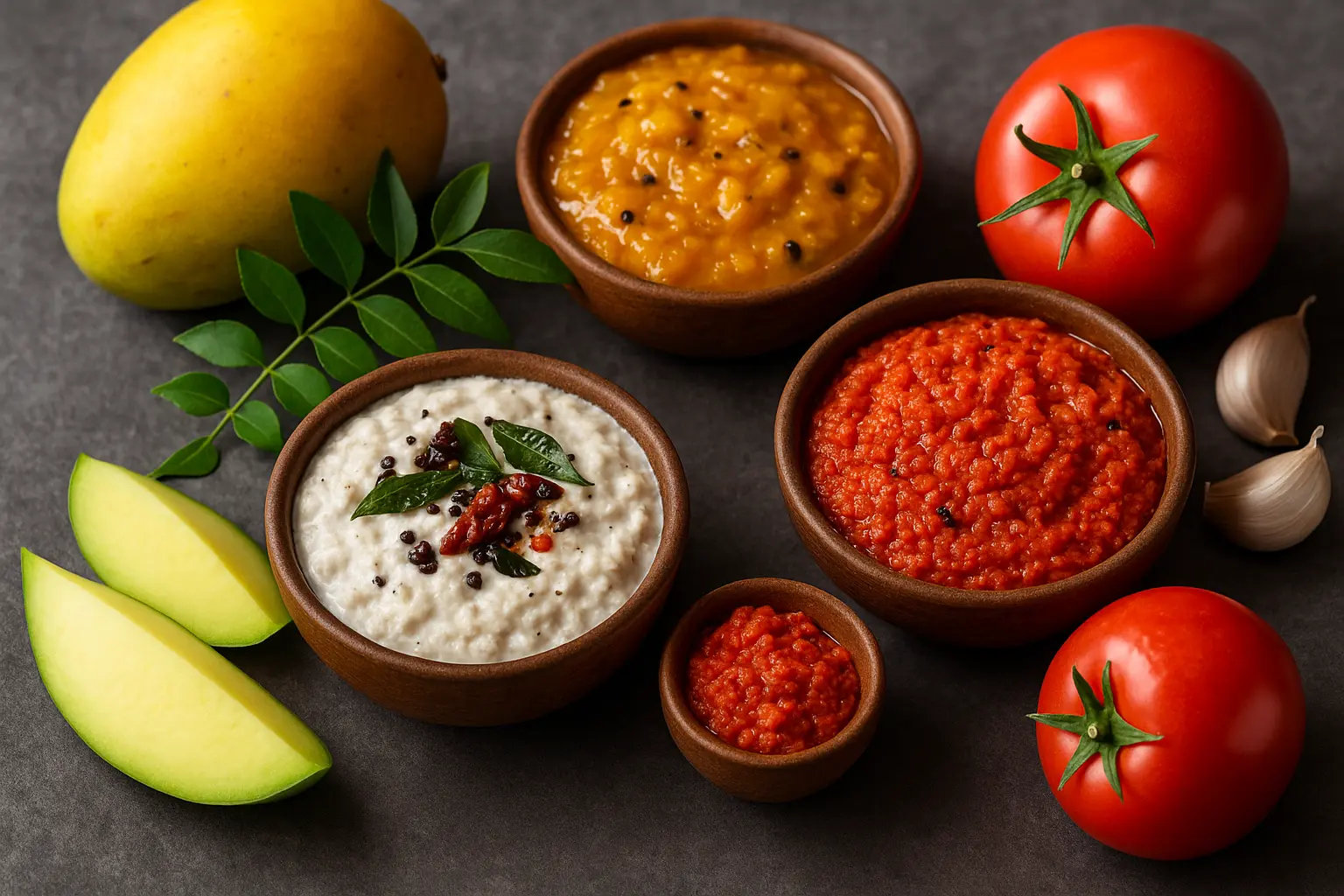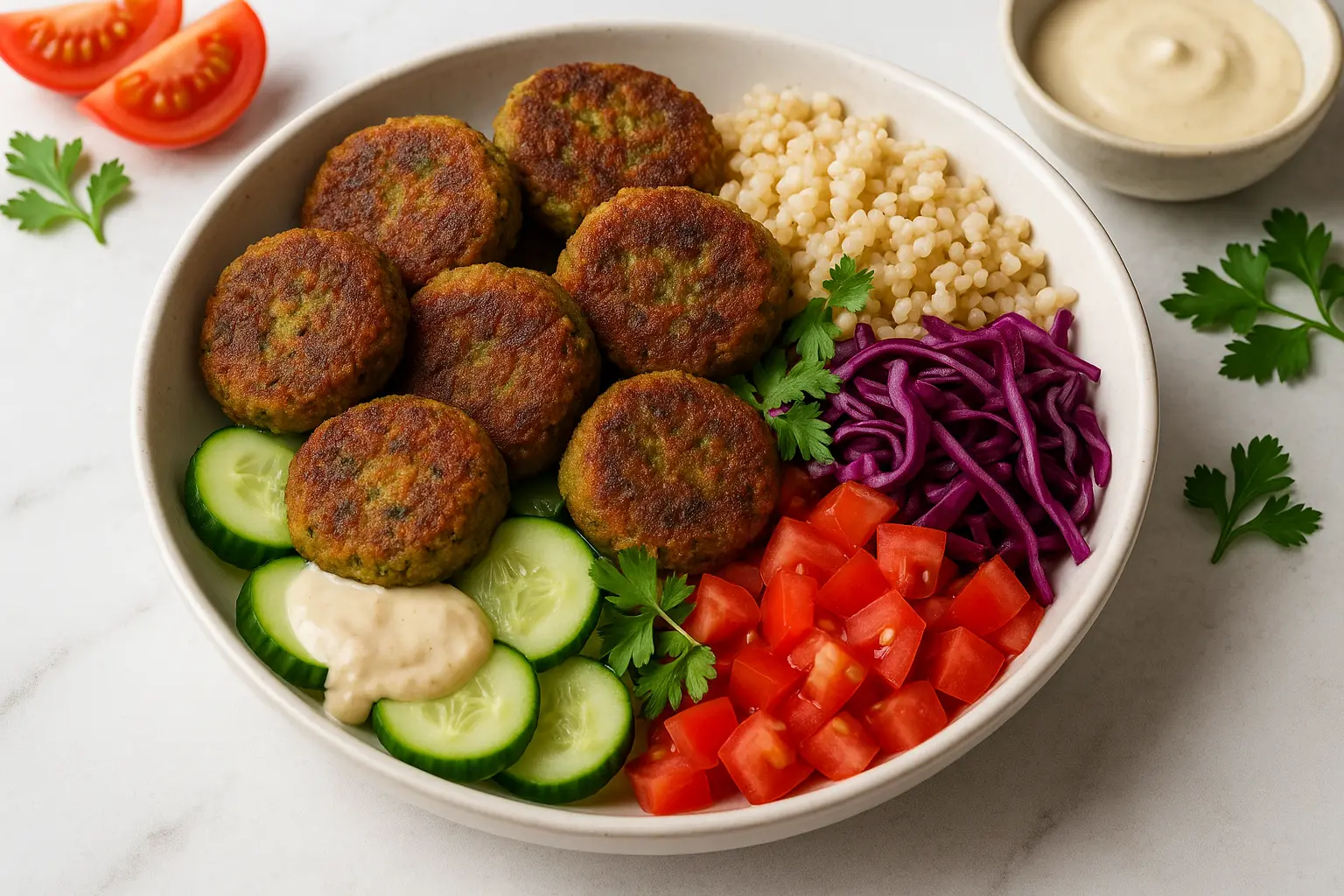Indian cuisine is synonymous with vibrant flavors, spices, and a remarkable ability to turn the simplest ingredients into dishes that burst with taste. Among its many culinary treasures, chutneys hold a special place. They’re not just condiments; they’re bridges between flavors—tangy balancing spicy, sweet calming heat, earthy adding depth to bright.
For most people outside India, the word "chutney" instantly recalls two classics: green chutney made with mint and coriander, and tamarind chutney with its sweet-sour notes. These are iconic, but they represent only a fraction of India’s chutney universe. From fiery garlic pastes in Maharashtra to cooling coconut blends in the South, from seasonal mango creations to tomato chutneys perfect with dosas—Indian chutneys are endlessly diverse.
This blog dives into chutneys beyond green and tamarind, exploring their origins, regional variations, recipes, and how they fit into both traditional and modern kitchens. Whether you’re vegan, into no-cook recipes, or just want to elevate your meals, chutneys are your secret weapon.

What Makes Chutneys Special?
Chutneys aren’t just dips. They play multiple roles in Indian meals:
- Flavor balancers: A spicy curry gets toned down with coconut chutney, while bland rice comes alive with fiery red chili chutney.
- Digestive aids: Many chutneys include ginger, garlic, or herbs known to aid digestion.
- Seasonal reflections: Mango chutneys in summer, tomato chutneys during tomato harvest, and even festive coconut-based varieties in monsoon.
- Vegan by nature: Traditionally plant-based, chutneys are naturally suitable for vegan and gluten-free diets.
- Quick & versatile: Many chutneys are ready in minutes, some require no cooking, and they store well.
Regional Chutney Treasures of India
1. South Indian Coconut Chutneys
Coconut chutney is a staple across Tamil Nadu, Kerala, Andhra, and Karnataka. Unlike the coriander-based northern chutneys, coconut versions are creamy, refreshing, and served with idlis, dosas, vadas, and more.
Variations include:
- Classic white coconut chutney – blended with roasted chana dal and green chilies.
- Red coconut chutney – with dried red chilies for a smoky kick.
- Ginger or onion coconut chutney – adding depth to breakfast staples.
- Mint-coconut fusion – balancing freshness with creaminess.
A must-have with any South Indian tiffin spread, coconut chutneys showcase the region’s love for coconut, curry leaves, and tempered spices.
2. Maharashtrian Garlic & Peanut Chutneys
In Maharashtra, chutneys are fiery, rustic, and bold.
- Dry garlic chutney (Lasun chutney): A powdery mix of roasted garlic, red chilies, and coconut. Often sprinkled inside vada pav, this chutney is an explosion of heat and flavor.
- Shengdana (peanut) chutney: A versatile chutney made by grinding roasted peanuts, garlic, and chilies. Works brilliantly with bhakris (millet rotis) or as a protein-rich side dish.
3. Bengali Mustard & Tomato Chutneys
Bengal has a dual chutney culture—savory with mustard, sweet with fruits.
- Kasundi: A pungent mustard-based chutney, often paired with fried snacks and street food.
- Tomato chutney: Sweet-sour with raisins and dates, commonly served at the end of festive meals like Durga Puja feasts.
4. Gujarati Sweet & Spicy Chutneys
Known for their balance of sweet and spicy, Gujarati chutneys are often enjoyed with farsan (snacks).
- Date & jaggery chutney: Sticky, sweet, with hints of spice.
- Green chili chutney: Minimal yet fiery, eaten with theplas or khakhras.
5. North Indian Onion & Amla Chutneys
Beyond tamarind, North India embraces seasonal chutneys.
- Onion chutney: Perfect with parathas, offering sweetness and spice together.
- Amla (gooseberry) chutney: Vitamin C-rich, tangy, and sharp—often ground fresh during winter.
6. North-Eastern Fermented Chutneys
The Northeast has its own unique chutney traditions.
- Fermented bamboo shoot chutney: Pungent, earthy, and paired with rice-based meals.
- King chili chutney (Bhut Jolokia): Not for the faint-hearted, this one celebrates the world’s spiciest chilies.
Must-Try Unique Chutney Recipes
Here are some chutneys to try at home—beyond the classics.
1. Tomato & Onion Chutney (South Indian Style)
- Tomatoes, onions, garlic, dried red chilies sautéed and ground.
- Topped with mustard seed–curry leaf tempering.
- Perfect with dosas, rotis, or even grilled sandwiches.
2. Dry Garlic Chutney (Vada Pav Style)
- Roasted garlic, dry coconut, red chilies ground into a coarse powder.
- Works sprinkled inside sandwiches, wraps, or with hot rice.
3. Mango-Ginger Chutney
- Seasonal raw mango blended with fresh ginger, green chilies, and jaggery.
- Tangy, spicy, and cooling—great with rice or dal.
4. Peanut Chutney
- Roasted peanuts, garlic, chilies, and tamarind blended.
- Creamy and protein-packed, excellent with rotis or idlis.
5. Coriander-Coconut Fusion
- Coriander leaves, grated coconut, chilies, lemon juice.
- Refreshing chutney for snacks, sandwiches, or grilled veggies.
Chutneys for Modern Lifestyles
Chutneys are no longer just sides for Indian meals—they’ve become versatile in global kitchens too.
- As sandwich spreads: Coconut or peanut chutney instead of mayo.
- As salad dressings: Thin down mango or tomato chutneys to drizzle over salads.
- As marinades: Kasundi works wonderfully to coat tofu, paneer, or grilled veggies.
- As dips: Garlic chutney or peanut chutney pairs well with nachos, chips, or roasted vegetables.
For busy lifestyles, chutneys are meal-prep friendly. Many can be stored in the fridge for a week or frozen in cubes for later use.
Tips for Perfect Chutneys
- Balancing flavors: Every chutney should balance heat, tang, sweetness, and salt.
- Use fresh spices: Dry roast chilies, cumin, or peanuts for maximum aroma.
- Seasonal produce: Mangoes in summer, tomatoes in winter, coconut year-round in the South.
- No-cook convenience: Many chutneys (like mint-coriander or peanut) need no cooking, just blending.
- Storage hacks: Store chutneys in airtight jars, always use dry spoons to extend shelf life.
Why You Should Try More Chutneys
Chutneys offer health benefits, culinary variety, and convenience:
- Nutrient-rich: Coconut, peanuts, gooseberries, and herbs add protein, vitamin C, and healthy fats.
- Diet-friendly: Most are vegan, gluten-free, dairy-free, and fit into weight loss or diabetic-friendly diets.
- Budget-friendly: Made from pantry staples like chilies, onions, garlic, or seasonal fruits.
- Time-saving: Quick recipes (often under 10 minutes) with minimal cooking.
Conclusion
Indian chutneys are not just condiments—they’re culinary stories bottled in small portions. Each region, season, and festival brings a new variety to the table. Going beyond the familiar green and tamarind, you discover a tapestry of flavors: spicy garlic, cooling coconut, tangy tomato, sweet mango, pungent mustard.
Whether you’re pairing them with dosas, spreading them on sandwiches, or serving them with global snacks, chutneys are proof that small things can transform entire meals. For anyone exploring Indian cooking—or simply wanting to elevate everyday food—chutneys are the unsung heroes you need to try.
Leave a comment
Your email address will not be published. Required fields are marked *




















